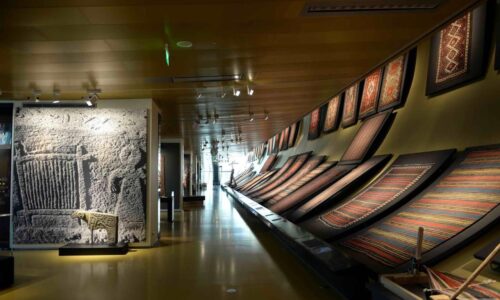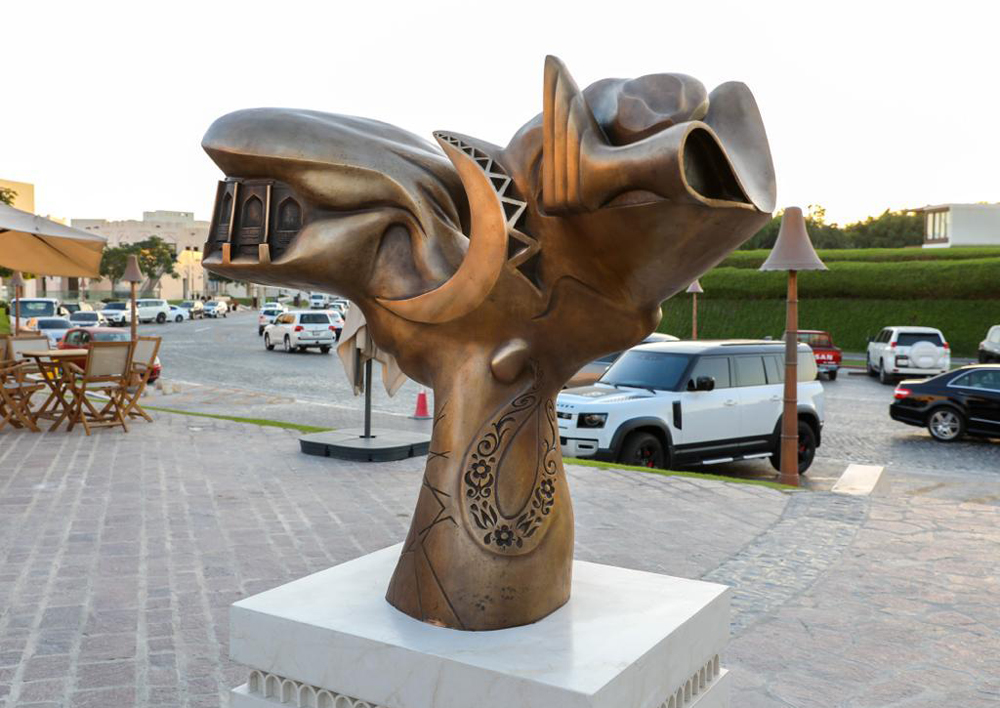
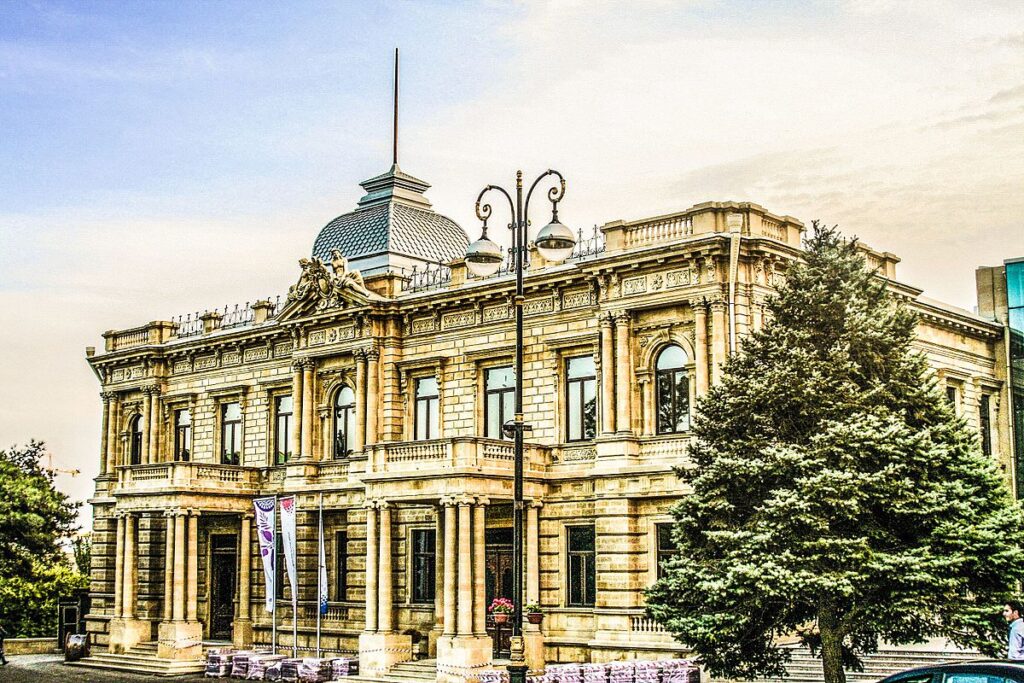
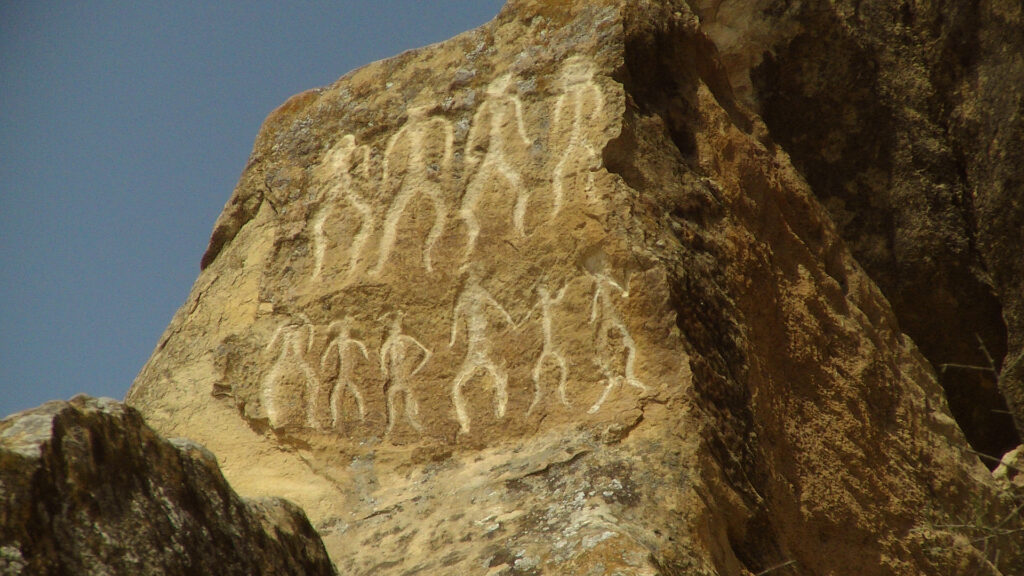
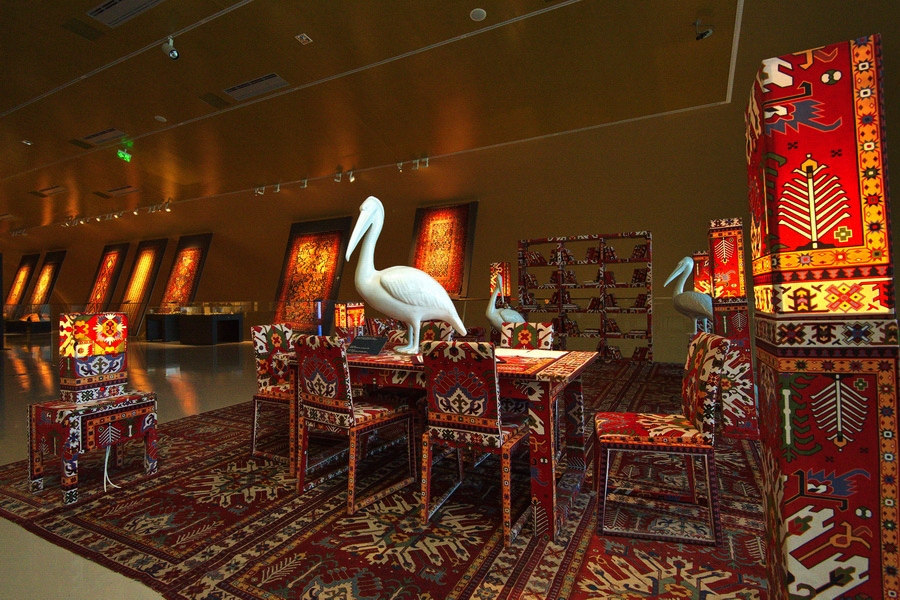
Azerbaijan’s culture entices visitors with centuries of history that are today reflected via flamboyant colours and passionate demonstrations of emotion. In this Eurasian crossroads, today known as Azerbaijan, nomadic traditions of warring Turkic tribes combined with sedentary Persian cultures and Arab-Islamic religion to form unique customs.. Travelers who pay close attention will also see Russian and European influences on the nation, whose citizens have preserved their identity as Muslims in the Caucasus, which is mostly Orthodox.
The vibrant, symbolic dances, beautiful tiny paintings, magnificent handwoven carpets, and cutting-edge theatrical and cinematic performances of Azerbaijan are all tangible examples of the country’s culture. While vivid epic tales combine history and folklore, Azerbaijan’s eclectic mix of ancient castles, sturdy Soviet buildings, and record-breaking skyscrapers serve as tangible reminders of the past.
Each area in traditional Azerbaijan has its own music, handicrafts, and culture, and its traditional lifestyles differ from one another. Long-term travel, museum visits, and participation in some of Azerbaijan’s numerous festivals, which are renowned to draw artists from all around the nation, are all ways to experience this richness.

Ancient Azerbaijani Culture
In Azerbaijan, the first human settlements reach back almost to the beginning of time. The earliest human remains found in the Soviet Union are bits of a 300,000-year-old jawbone that were found at the same location as remnants of a pre-Acheulean community that were unearthed in Azykh Cave.
Ancient Azerbaijani culture is not just found in archaeology, as evidenced by the collection of Gobustan Petroglyphs, which are a must-see for tourists. These amazing rock engravings, which date back to the Mesolithic Period, include scenes of hunting, fishing, physical work, and dance performances.
A visit to the Zoroastrian Ateshgah Fire Temple will leave a lasting impression on you and provide you an extremely uncommon look into Azerbaijan’s history using fire. Gala State Historical-Ethnographic Museum The reserve is a treasure trove with its extensive collection of coins, ceramics, jewellery, household objects, and rock art. These findings demonstrate the cultural influence of the Greeks, Romans, Persians, Mongols, and Turks while also demonstrating that Azerbaijan has always asserted its own unique identity.
Azerbaijani Applied Arts
The first metal and copper works from Azerbaijan were created around 5000 years ago, and they later developed into a broad variety of handicrafts that were well-known throughout the Silk Road for their superior craftsmanship. The centre of regional applied arts has, however, long been Azerbaijani rugs, as evidenced by Bronze Age carpet remnants found close to Mingachevir. As rugs were used to decorate homes over time, carpet weaving evolved into a talent that was necessary in every family.
Over 140 distinct carpet ornamentations have already been recognised in Azerbaijan by modern professionals; several specimens may be viewed in the Azerbaijan National Carpet Museum in Baku. Tourists will be happy to learn that Azerbaijani weavers and artists have maintained their skill throughout time; superb handicrafts are still widely available in Azerbaijan, and travellers will have a fantastic selection of souvenirs to choose from while travelling.

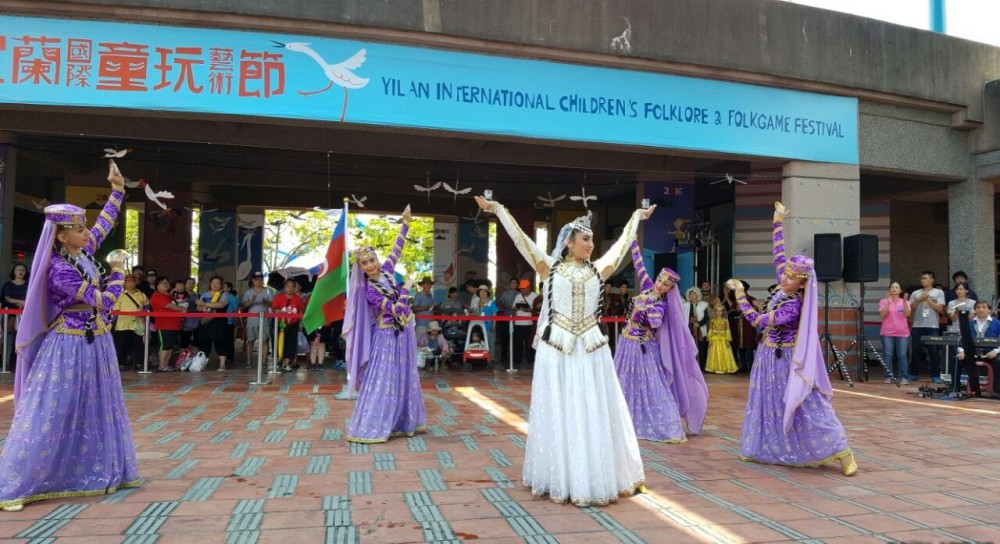
Azerbaijani Folklore
The indigenous virtues of bravery, knowledge, generosity, respect for nature, and pride in one’s country are all creatively expressed in Azerbaijani folklore. While other Azerbaijani folklore has been transmitted to us through poetry and epics, some of the country’s oldest stories have only remained through ceremonial acts. These latter have continued to play a significant role in Azerbaijani traditional folklore, as seen by well-known works as Oguzname, Epic of Koroghlu, and Book of Dede Korkut. Azerbaijani ideas were strengthened thanks in large part to the preservation of epics by local minstrels known as ashugs. Traditional folklore was further expressed in bayati, four-line oral poetry with seven syllables each that are brief yet fervent. Bayati were typically delivered by female poets and frequently took the form of folk wisdom.
Azerbaijani Music and Dance
Having evolved over 4,000 years, Azerbaijani music and dance are among the most expressive types of regional art. Mugham, an improvisational musical genre that alternates vocal and instrumental elements, is the most distinctive aspect of Azerbaijani music. It is included on the UNESCO Intangible Cultural Heritage List and is honoured yearly at the World of Mugham Festival. In Azerbaijan, musical performances are accompanied with exquisitely choreographed and emotionally charged dances, which are even portrayed in the Gobustan petroglyphs. Female dances, like the asma kasma bridal dance, are often slower and are distinguished by their smooth movements and overly expressive use of the head and hands. Contrarily, male performances like the martial arts-based gangi focus on speed, leaps, and repetitive, swift leg movements.
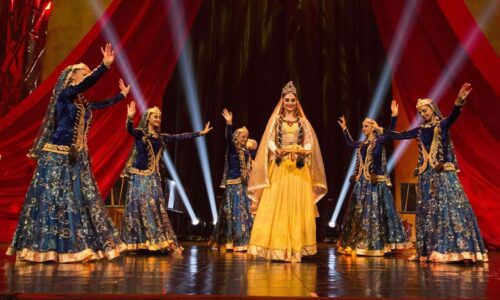
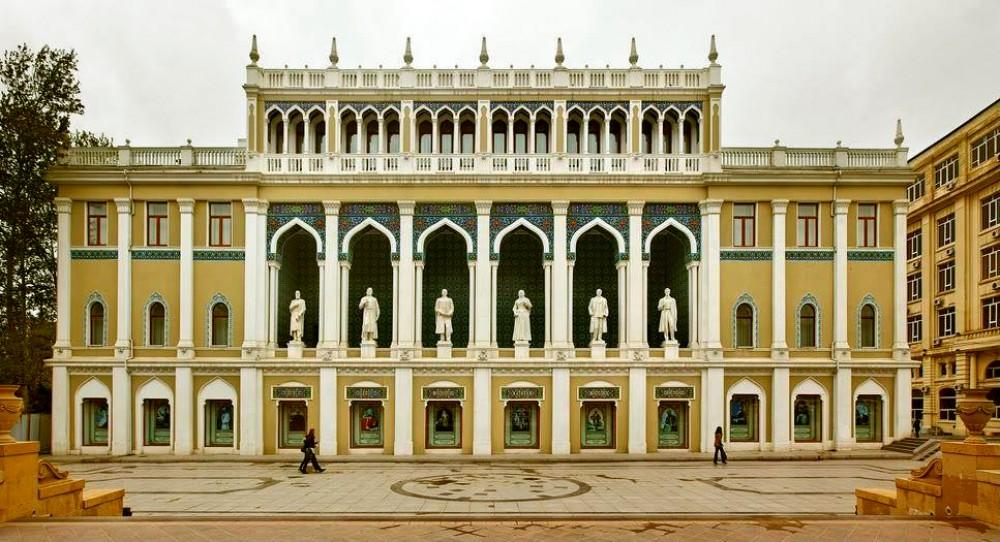
Azerbaijani Literature
Both written and oral traditions have helped to preserve Azerbaijani literature. Written literature emerged in the Middle Ages under separate Persian and Arabic influence, and oral folklore evolved under the influence of the Turkic mindset. Many Azerbaijani writers were coerced into serving as propagandists for the Soviet Union throughout the Soviet era, but following Stalin’s death, writers were once again free to explore new ideas. Ali and Nino: A Love Story, which was initially published in 1937 under the pseudonym Kurban Said and has since been translated into over 30 languages, is currently one of the most well-known works of Azerbaijani literature. However, the magnificent poet Nizami Ganjavi, who lived in the 12th century, is still considered to be the most recognised author in Azerbaijani history.
Azerbaijani Fine Arts and Architecture
Ancient petroglyphs known as Gobustan Rock Art, porcelain objects on exhibit at the National Art Museum, and ornamental columns discovered in Nakhchivan and Gabala are examples of Azerbaijani fine arts. The development of regional art forms and the foundation of a new religion in Azerbaijan were expedited by Silk Road commerce and an Arab invasion in the 7th century, but it was the Persians who brought the now-famous art of miniature paintings to the region. Illustrative art of the 1920s was preceded by works of “severe realism,” which were required by the tough lifestyle many people had to suffer in the middle of the 20th century. Plant themes and realistic easel paintings provided the foundation for this style. Local artists gained access to the global art scene after the fall of the Soviet Union, and today Azerbaijani artists exhibit their work both domestically and abroad. Baku and other major towns also frequently organise art festivals.

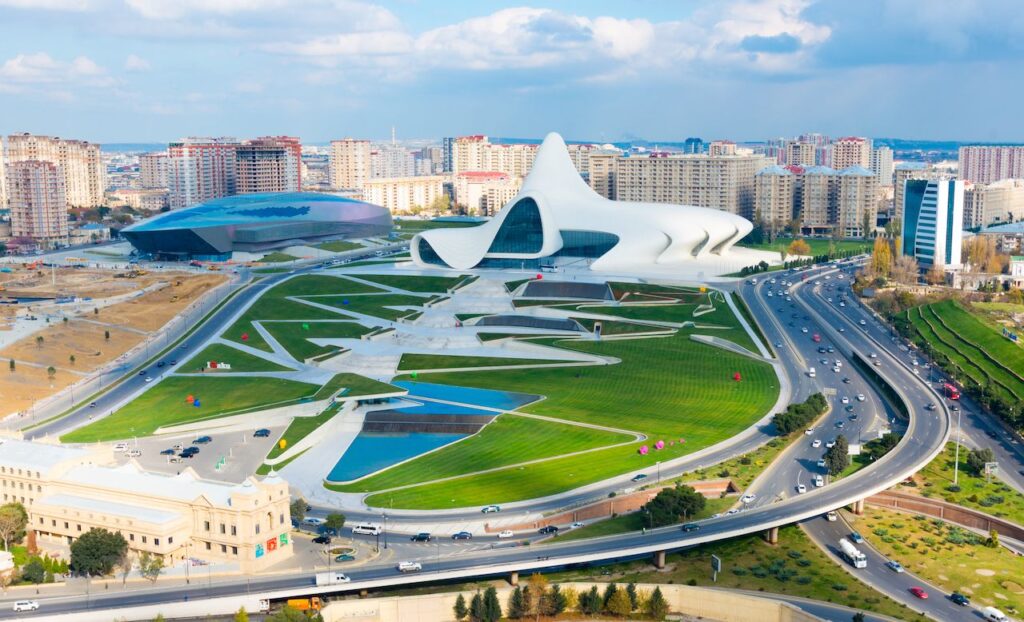
Azerbaijani Architecture
The remains of Nakhchivan, Gabala, and Ateshgah Fire Temple serve as clear reminders of the region’s ancient roots, while pre-Acheulean artefacts discovered in Azykh Cave have been estimated by some scholars to be more than 700,000 years old. However, the actual Azerbaijani architectural masterpieces are kept secret in enclaves like Baku’s Icheri Sheher (Inner City), where visitors may find treasures like the Shirvanshahs’ Palace from the Middle Ages. Icheri Sheher’s attractive aesthetics are in stark contrast to the ultra-modern Flame Towers that currently protect its boundaries. An era of rapid urbanisation was brought about by Soviet administration in Azerbaijan, and This was followed by the construction of large housing developments and a harsh brutalism that invaded the streets of cities that had previously been bordered with delicate, elegant shapes. Fortunately, Azerbaijan continues to be rich in Old World and mediaeval marvels that draw tourists from all over the world.
Azerbaijani Theatre
While contemporary theatre started to emerge in the 19th century, Azerbaijani theatre found one of its oldest expressions in a traditional Navruz comic routine with the two characters Kos-Kosa and Kechel. In Baku in the spring of 1873, the first professionally produced plays in the Azerbaijani language were presented, and their popularity inspired many aspiring authors to follow suit. Local theatre soon turned into a forum for protesting injustice and religious intolerance. Although local theatres were subject to rigorous censorship during the Soviet era, Azerbaijani theatre has since accepted both classic and avant-garde productions, as demonstrated by Vagif Ibrahimoglu’s YU Theatre. Azerbaijan now has a large number of public and private theatres, such as the State Puppet Theatre, Pantomime Theatre, and Marionette Theatre.


Azerbaijani Cinema
Azerbaijani cinema is historically notable since the nation was among the first to enter the film business with its 1898 release of an oil fires-themed, silent, 30-second short. The successful silent films made in Azerbaijan followed the short in the decades that followed. The focus of movies moved to the war effort and the labours of the working class after local cinema was nationalised in the 1920s under Soviet authority. One of the happiest moments in Azerbaijani cinematic history was when filmmaker Rustam Ibrahimbeyov received an Academy Award for his film Burnt by the Sun in 1995. After holding the inaugural Baku International Film Festival after winning independence, Azerbaijan cemented its place in the world of cinema.
Azerbaijani Museums
Each of the more than 50 museums in Azerbaijan has unique artefacts that serve as physical reminders of Azerbaijani history and culture. Although there are too many to mention completely, some of these museums, the most of which are in Baku, include the following highlights:
Azeri Museum of Carpets
Azerbaijan’s State Museum of Musical Culture
Azerbaijan’s Museum of Independence
Azerbaijan’s National Museum of History
Nizami Museum of Azerbaijani Literature, Azerbaijan National Museum of Art
For those seeking something a bit more distinctive, Azerbaijan also offers a broad selection of little, amusing museums devoted to a very particular subject or individual, such as:
Baku Miniature Book Museum
The Nobel Brothers’ House Museum is located near the Villa Petrolea Historical-Ethnographic Museum of Khinalig Village.
Museum Stone Chronicle
Crutches Museum in Naftalan
There are websites for certain museums in Azerbaijan where you can find out about their operating hours, admission costs, and details on current exhibitions.
